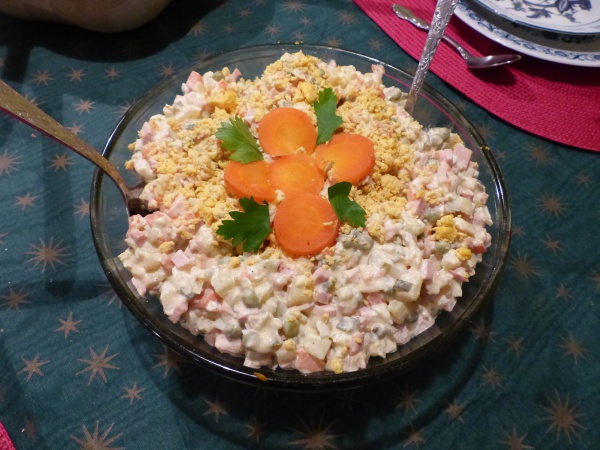Facts About Olivier salad
Olivier salad, a beloved staple in Russian cuisine, has captured the hearts and taste buds of people across post-Soviet countries, Europe, Iran, Israel, Mongolia, and Latin America. This delightful dish typically features a blend of diced boiled potatoes, carrots, pickles, green peas, eggs, celeriac, onions, chicken or sausage, apples, salt, pepper, mustard, and mayonnaise.
The salad was first created by Lucien Olivier in the 1860s and became a closely guarded secret at Moscow's Hermitage restaurant. However, Ivan Ivanov, a sous-chef, attempted to replicate it and introduced his version known as "Stolichny salad." Over time, the ingredients evolved to include more accessible and affordable items.
Following the Russian Revolution, the salad saw some modifications: chicken or sausage replaced the original grouse and crayfish, while pickled cucumbers and green peas substituted olives and capers. Its popularity spread throughout Europe, resulting in various regional adaptations. In Asia, countries such as Turkey, Iran, Pakistan, India, and Mongolia have created their own interpretations of the dish. Similarly, Latin American countries have developed their versions, often featuring finely minced boiled potatoes and carrots mixed into a creamy mayonnaise dressing.
Despite the many variations, Olivier salad remains a favorite, particularly during New Year's Eve celebrations in Russia and post-Soviet states. Its versatility allows for personal touches and regional twists, making it a cherished component of numerous culinary traditions worldwide.

 Azerbaijan
Azerbaijan